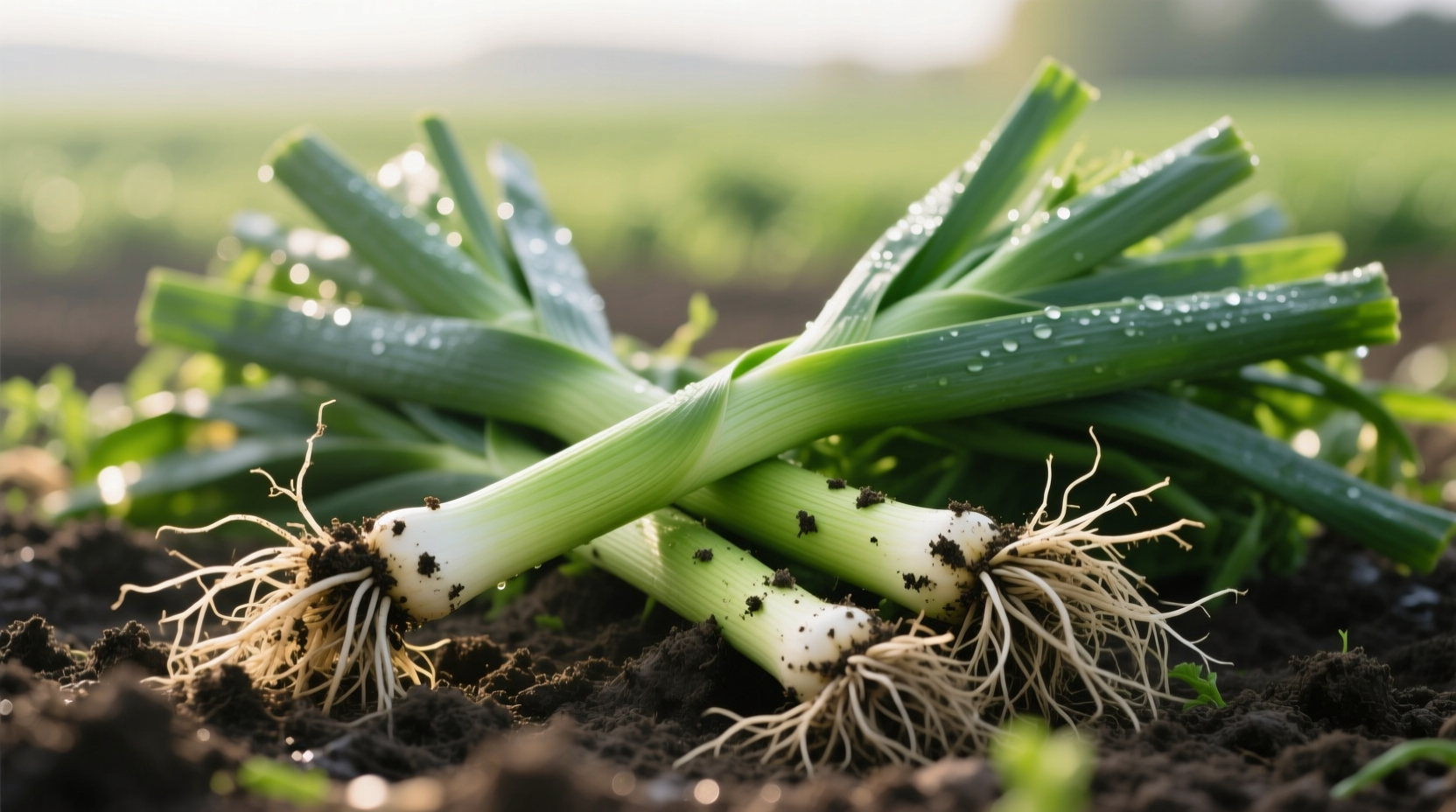What Exactly Is a Kershaw Leek?
When gardeners and culinary enthusiasts search for "Kershaw leek," they're typically referring to Kershaw's Giant, a distinctive heirloom leek variety that has maintained popularity among home growers for over a century. Unlike common supermarket leeks that often represent hybrid varieties, Kershaw's Giant belongs to the Allium ampeloprasum species but stands out for its remarkable resilience and culinary versatility.
Developed in the early 1900s, this non-hybrid variety has survived thanks to seed-saving traditions and its exceptional performance in challenging growing conditions. The Kershaw leek distinguishes itself with a notably mild flavor profile compared to sharper varieties, making it particularly valuable for raw applications in salads and garnishes where traditional leeks might prove too pungent.
Historical Development Timeline
Understanding the evolution of the Kershaw leek provides context for its enduring popularity:
- Early 1900s: First documented cultivation of Kershaw's Giant in North America, likely developed from European stock
- 1920s-1940s: Listed in multiple seed catalogs as a preferred winter leek variety for northern climates
- 1950s-1970s: Declined in commercial production as hybrid varieties gained favor for uniformity
- 1980s-Present: Preserved by heirloom seed savers and specialty growers, experiencing renewed interest among sustainable agriculture advocates
According to research from the USDA Agricultural Research Service, heirloom varieties like Kershaw's Giant represent important genetic reservoirs that maintain diversity often lost in modern hybrid development.
Physical Characteristics and Flavor Profile
Kershaw leeks deliver distinctive features that set them apart from contemporary varieties. Their most notable characteristic is the substantial size—mature plants typically develop 1.5-2 inch diameter shafts that extend 12-18 inches above ground. The blue-green foliage remains remarkably upright even in harsh winter conditions, a trait that distinguishes them from many other leek varieties that collapse under snow or ice.
| Variety | Shaft Diameter | Cold Hardiness | Flavor Profile | Maturity Time |
|---|---|---|---|---|
| Kershaw's Giant | 1.5-2 inches | USDA Zone 3 | Mild, sweet, subtle onion notes | 120-150 days |
| American Flag | 1-1.5 inches | USDA Zone 5 | Stronger, more pungent | 100-120 days |
| King Richard | 1-1.25 inches | USDA Zone 7 | Medium intensity | 75-90 days |
| Blue Solaise | 1.25-1.5 inches | USDA Zone 4 | Robust, earthy | 120-140 days |
Growing Kershaw Leeks: Practical Guidance
For gardeners considering adding Kershaw leeks to their rotation, understanding their specific requirements ensures optimal results. Unlike many modern varieties bred for speed, Kershaw's Giant requires patience but rewards with exceptional winter performance.
Planting Schedule: Start seeds indoors 10-12 weeks before your last expected frost date. Transplant outdoors when seedlings reach pencil thickness, typically in late spring. For overwintering crops, plant in mid-summer to allow sufficient root development before cold temperatures arrive.
Soil Requirements: Kershaw leeks thrive in deeply worked, well-drained soil with a pH between 6.0-7.0. Incorporate generous amounts of compost before planting, as these heavy feeders require consistent nutrition throughout their long growing season. The University of Minnesota Extension recommends maintaining consistent moisture levels, particularly during shaft formation.
Cold Protection: While exceptionally hardy, mulching with straw or leaves when temperatures consistently drop below 20°F provides additional protection. This practice allows harvest throughout winter in milder climates and ensures earlier spring availability in harsher zones.

Culinary Applications and Storage
Chefs and home cooks appreciate Kershaw leeks for their culinary flexibility. Their mild flavor makes them particularly valuable in applications where traditional leeks might overwhelm other ingredients:
- Raw preparations: Slice paper-thin for salads or use as elegant garnishes where their mildness won't dominate
- Creamed dishes: Their substantial texture holds up well in creamy soups and sauces without disintegrating
- Grilling: Cut lengthwise and grilled over medium heat develops remarkable sweetness
- Pot roasts: Place beneath meats as both flavor enhancer and natural rack
For storage, keep unwashed Kershaw leeks in a perforated plastic bag in your refrigerator's crisper drawer for up to three weeks. Alternatively, freeze chopped leeks after blanching for 90 seconds for use in cooked dishes throughout winter months.
Where to Source Authentic Kershaw Leek Seeds
Due to its heirloom status, Kershaw's Giant isn't typically available at mainstream garden centers. Reputable seed suppliers specializing in heritage varieties offer the most reliable sources:
- Seed Savers Exchange (seedsavers.org) maintains genetically diverse stock through their member network
- Baker Creek Heirloom Seeds (rareseeds.com) offers certified organic Kershaw leek seeds with detailed growing instructions
- Fedco Seeds (fedcoseeds.com) provides regionally adapted stock particularly suited for northern climates
When purchasing, verify that seeds are specifically labeled "Kershaw's Giant" rather than generic "Kershaw" to ensure authenticity. The Organic Seed Alliance recommends checking for germination rates above 80% and harvest dates within the past two years for optimal results.
Frequently Asked Questions
How does Kershaw leek differ from standard grocery store leeks?
Kershaw leeks feature a significantly milder flavor profile and thicker shafts (1.5-2 inches) compared to commercial varieties typically found in stores. They also demonstrate superior cold tolerance, surviving temperatures down to -30°F when properly mulched, whereas most supermarket leeks represent faster-maturing but less hardy varieties like King Richard.
Can Kershaw leeks be grown in containers?
Yes, but with specific considerations. Use containers at least 12 inches deep with excellent drainage. Plant seeds ½ inch deep and thin to one plant per 4-inch diameter pot. Container-grown Kershaw leeks require more frequent watering and feeding but can successfully overwinter in zones 5+ with proper insulation of the pots.
What common mistakes should Kershaw leek growers avoid?
The most frequent errors include planting too shallow (shaft development requires deep soil), inconsistent watering (causes splitting), and harvesting too early (Kershaw needs full maturity for best flavor). Many growers also underestimate the spacing requirements—allow 6-8 inches between plants for optimal shaft development.
How long does it take for Kershaw leeks to mature?
Kershaw's Giant requires 120-150 days from seed to full maturity, significantly longer than many modern varieties. This extended growing season contributes to their exceptional flavor development and cold hardiness. For best results, start seeds indoors 10-12 weeks before transplanting to accommodate their lengthy growth cycle.











 浙公网安备
33010002000092号
浙公网安备
33010002000092号 浙B2-20120091-4
浙B2-20120091-4